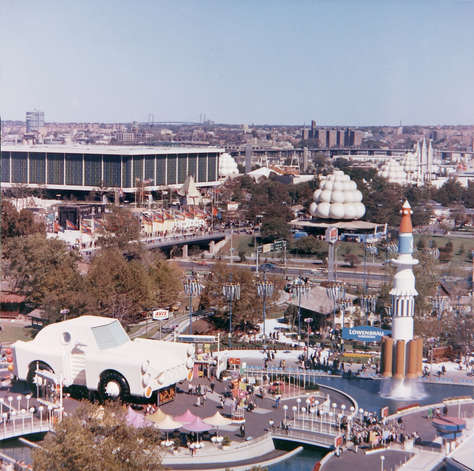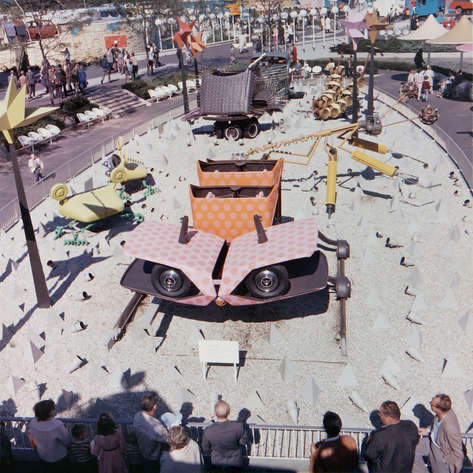New York World's Fair
At the World's Fair in New York 1964, the Nelson firm was commissioned with a total of four projects: the Chrysler Pavilion, the Irish Pavilion, the Hall of Presidents, and an exhibition from the Frick Collection.
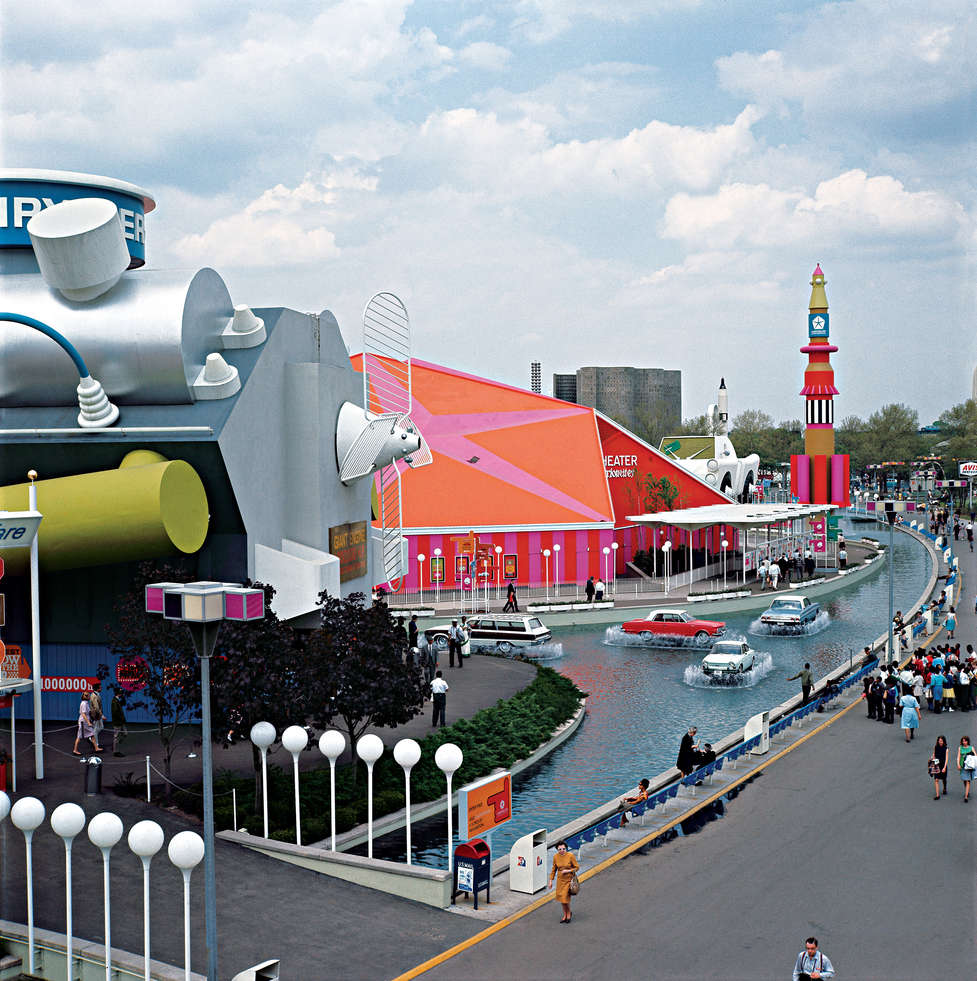
Nelson and Company received the commission to design the Chrysler Pavilion after a competition among 33 firms. The budget of the car manufacturer was but a fraction of what the competition at Ford and General Motors had planned. The concept of the Nelson firm included five key elements of the Chrysler presentation: a merry-go-round with Simca carriages, a gigantic 64-foot Chrysler
with an enormous, accessible motor, a zoo with fantastic animals made of car parts, and a large building with four cinemas. Vincent Scully, who reviewed the exhibition for Life magazine called the Nelson firm's design "the surprise of the World's Fair" and "pop art at its best." The Chrysler Pavilion had the third-highest number of visitors of the entire fair.
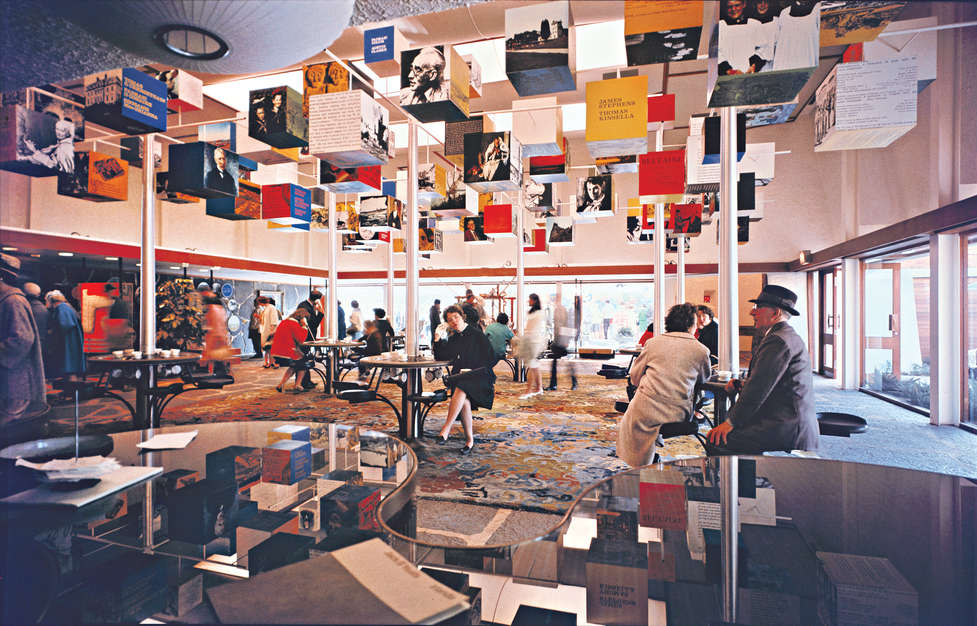
Irish Pavilion
Robert Fymat
Andrew Devane, the architect of the Irish Pavilion, chose George Nelson to design the exhibition. Nelson made the significance of Irish literature the central theme. For this purpose, a space frame
was erected, and around the central masts listening stations were grouped where visitors could listen with headphones to readings of Irish literature. Above their heads were cubes that featured illustrations of the writers and quotations from their works. For the design of the exhibition, Devane and George Nelson and Company were awarded a prize by the American Institute of Architects.
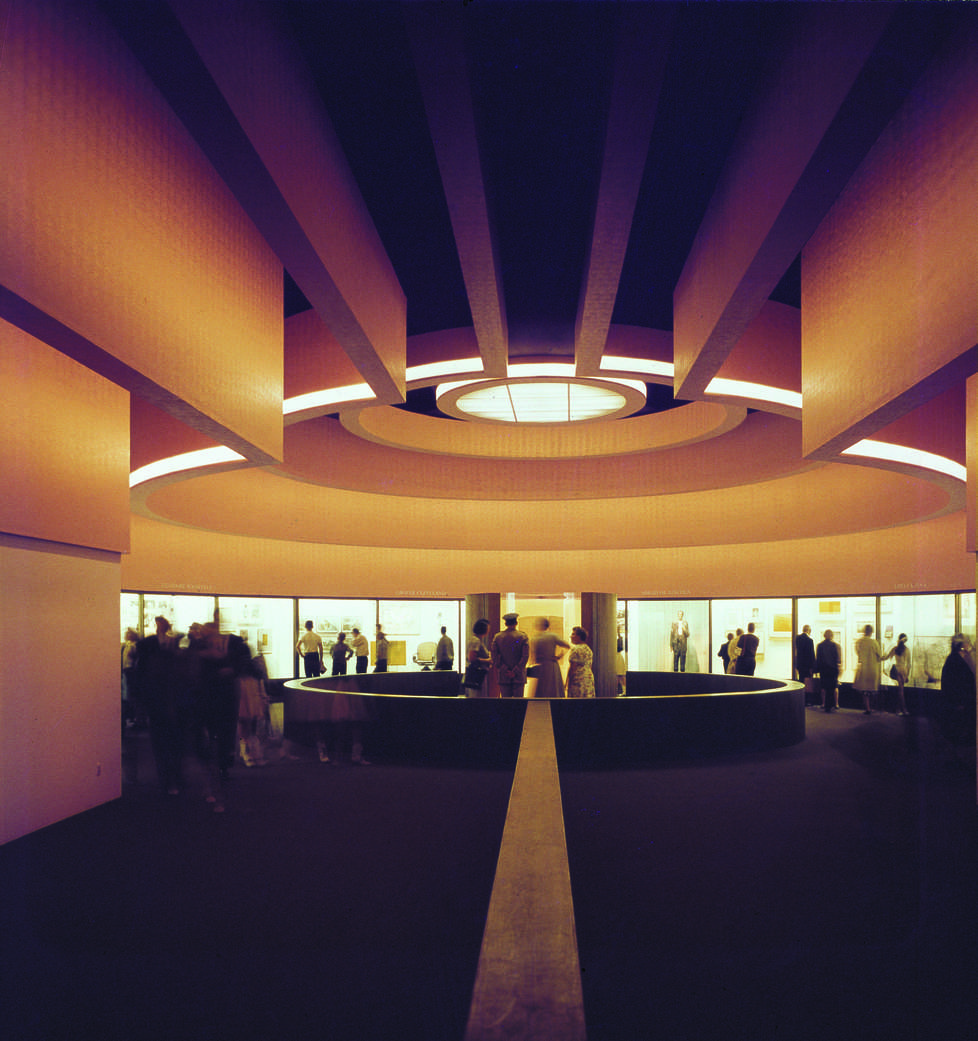
Hall of Presidents, Federal Pavilion
The idea for the exhibition came from President Kennedy, who wanted to see important objects and documents from the history of American presidents on display. In the Hall of Presidents, original manuscripts of the Bill of Rights and the inaugural address of George Washington were on view.

